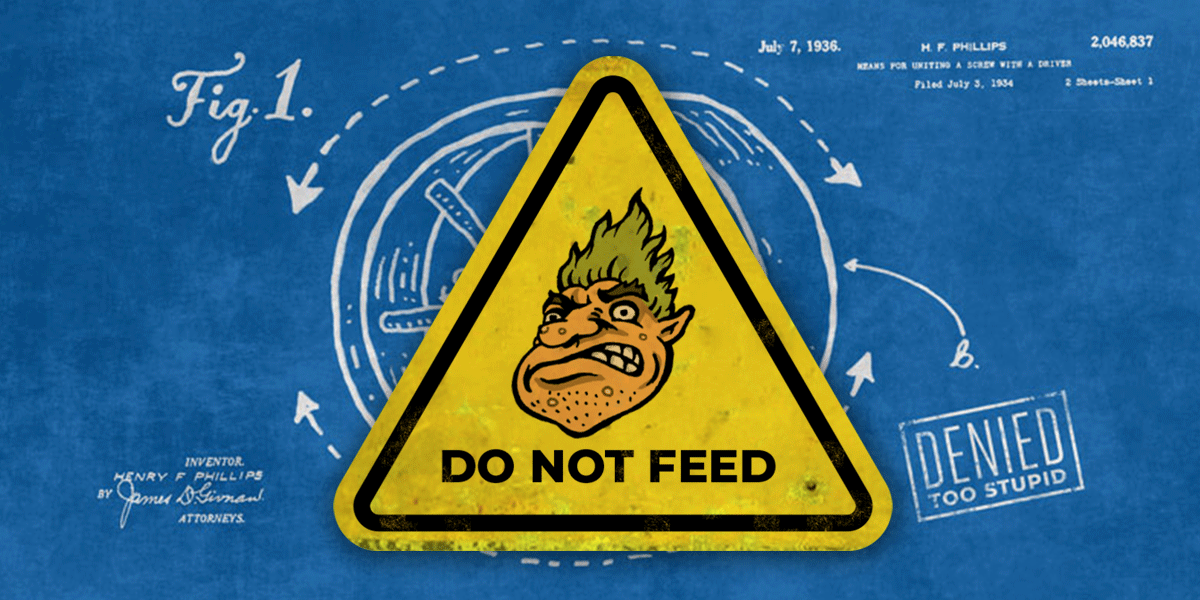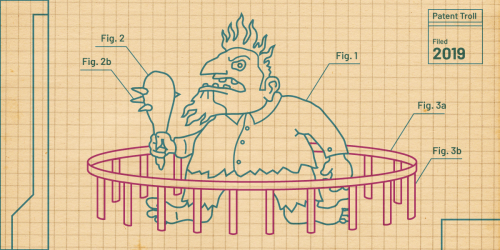Design is incredibly important to how people use and choose products, but design patents are not. They provide exclusive rights only to ornamental product features, which by definition are not useful or artistic; for those that are, utility patent and copyright protection exist instead. As we’ve said before, we don’t need design patents because they restrict far more creativity, innovation, and economic activity than they promote. Unfortunately, the Patent Office is preparing to grant even more.
Design patents provide exclusive rights to ornamental product features that are not useful enough to patent or creative enough for copyright. As we’ve said before, we don’t need design patents, as they give far too much power to those who give so little to the public. Unfortunately, the Patent Office wants to grant more design patents to those who contribute even less.
To do that, the Patent Office is proposing regulations that would open the floodgates to unprecedented and unnecessary types of design patents on computer-generated imagery (CGI). Although the standards for CGI design patents are way too low already, the Patent Office wants to make them even lower by allowing patented designs on non-physical products, like websites, software applications, and holographic projections.
We have never allowed patents on designs untethered to physical products, and should not do so now. Design patent owners have the power to stop anyone else in this country from making, using, or selling what their patent covers. If companies can get patents on designs for non-physical products, like website banners, they will have the right to sue anyone whose website uses the same or similar features to demand payment or force them to stop. Given the exorbitant cost of litigation, companies with the resources to amass design patents will have massive power over what the web looks like for the rest of us.
We should be especially cautious of expanding corporate power over computer graphics during a global pandemic when face-to-face communication is a public health risk. The last thing we need are more design patents restricting people’s ability to compete, create, and freely express themselves online. That is why EFF submitted comments urging the Patent Office not to take this unprecedented and perilous approach.
Extending design patent protection to digital images means unnecessarily extending protection to content that already gets ample protection under copyright and trademark law. Letting design patents intrude further into the realm of graphic design creates uniquely dangerous risks. When copyright applies, so do protections for fair uses under the First Amendment. But there are no such protections for the use of patented designs. That makes the extension of design patent protection a threat not only to technological innovation and competition, but also to creativity and free expression.
Despite these dangers, the Patent Office is proposing rules that will ensure we see more design patents and more patent litigation. The Office wants to change how it applies the part of the Patent Act which makes an “ornamental design for an article of manufacture” eligible for protection by effectively discarding the “article of manufacture” requirement altogether. For example, the Patent Office admiringly cited Singapore’s decision to eliminate a requirement that “a design must be applied to a physical article in order to be protected,” thus allowing patents on graphical user interface (GUI) designs applied to a “non-physical product.” But in the U.S., patents on designs for non-physical products have never been allowed.
Nor should they: granting new and unprecedented design rights would wreak havoc on the U.S. economy when it is already struggling to recover from the economic depression caused by the unrelenting COVID-19 pandemic. Now more than ever, people depend on computer technology and connectivity to work, learn, communicate with each other, and get essential products and services—from groceries to health care. We should not impose any additional restrictions on people’s ability to create, use, and communicate digital content.
To that end, Singapore may not be the best example to draw from — after all, its law also includes content-based prohibitions on designs that do not align with public order or morals. If other countries are to serve as models, it would be better to look to those that better align values of free expression and individual choice in their design regulations. One such model is Germany, where the law governing registered designs explicitly says a “computer program is not considered to be a product.”
As we’ve written before, former Director of the Patent Office Andrei Iancu worked overtime during his tenure to tilt the scales in favor of patent owners and against technologists, start-ups, and end-users. Although his departure from the office is a positive sign, it will take a lot of time and work to rebuild from the damage he inflicted. If this proposal is adopted, however, the damage will be more pervasive and difficult to fix.
We call on the Patent Office to reconsider—and abandon—this effort to expand design patent protection. Instead of lowering patentability standards, we should be empowering examiners to reject deficient design patent applications under existing law. Granting more and worse design patents will only encourage extortionate patent litigation and deter the innovation and economic activity the patent system is supposed to promote.









